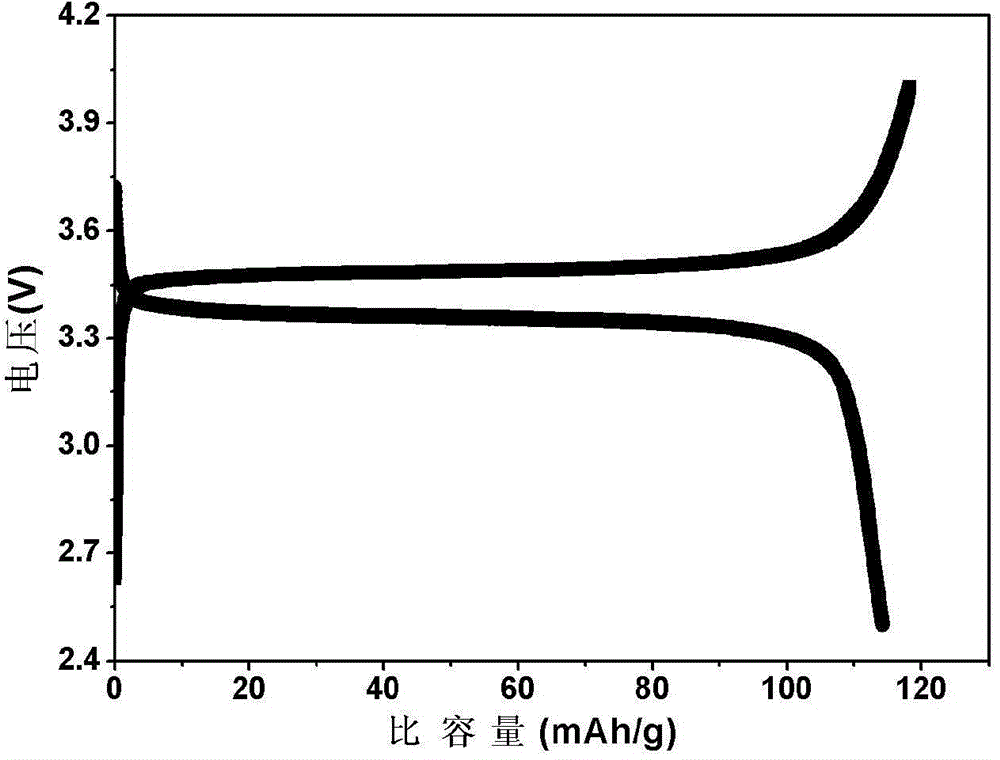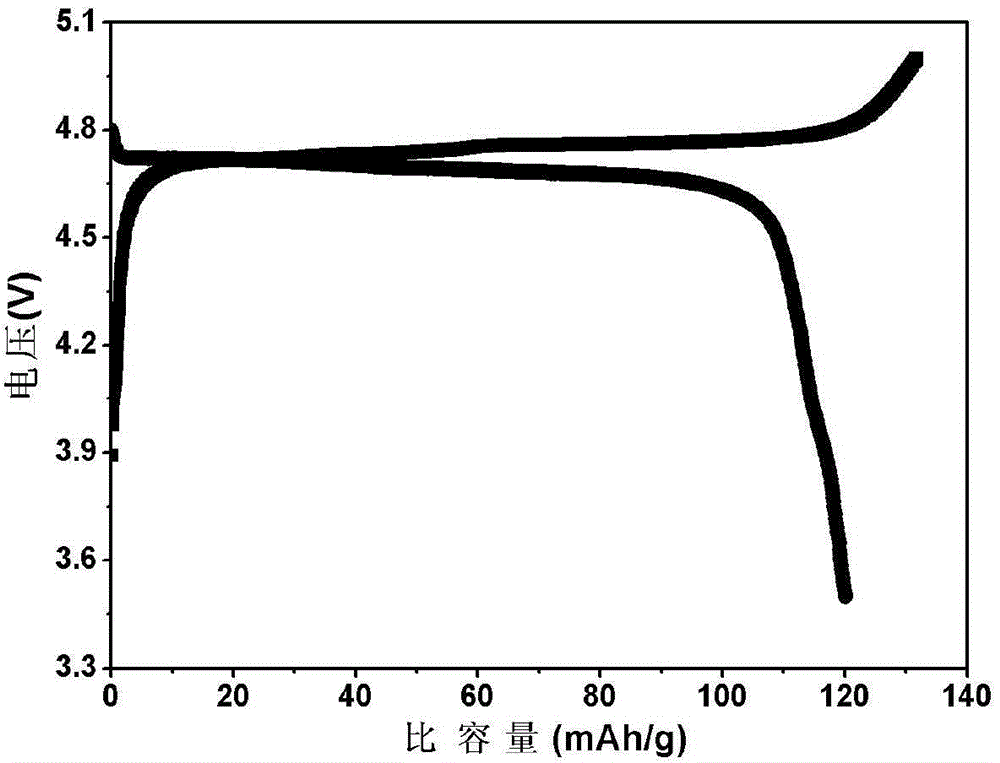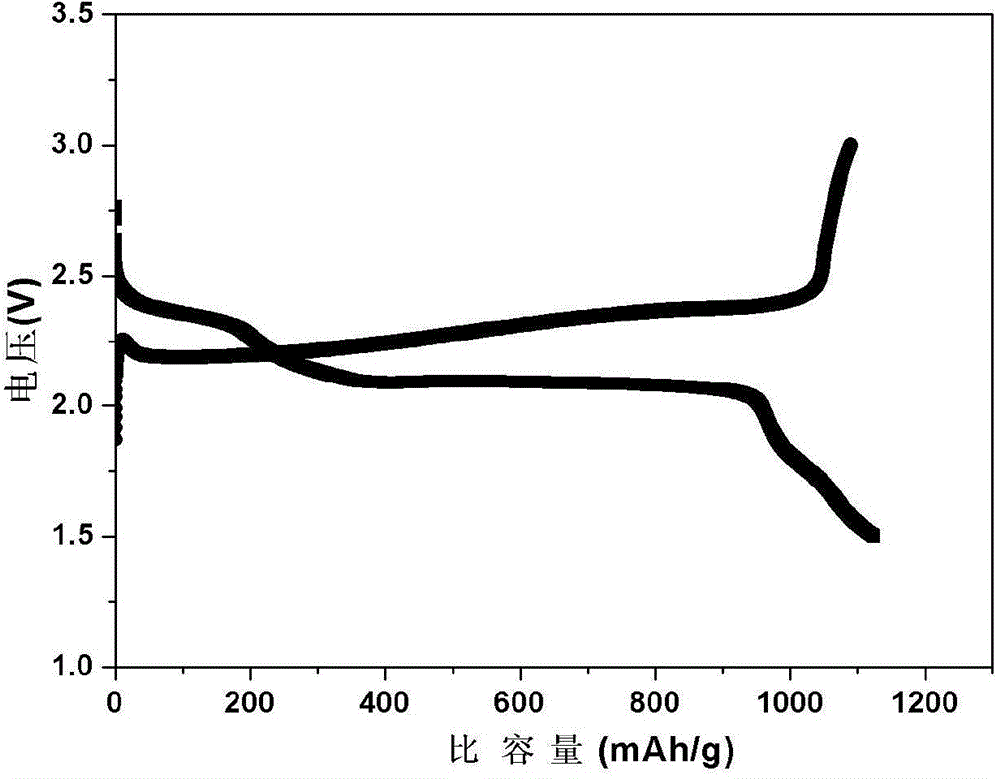Polycarbonate all-solid-state polymer electrolyte, all-solid-state secondary lithium battery made of same and preparation and application thereof
An all-solid polymer, carbonate technology, applied in non-aqueous electrolyte batteries, secondary batteries, lithium batteries, etc., can solve the problem of difficult to obtain independently supported polymer films, linear and grafted polymers with poor mechanical properties , small electrical conductivity of the reticulated polymer, etc., to achieve excellent oxygen and water barrier, good mechanical properties, and easy preparation.
- Summary
- Abstract
- Description
- Claims
- Application Information
AI Technical Summary
Problems solved by technology
Method used
Image
Examples
Embodiment 1
[0077] Add 2g of polypropylene carbonate and 18g of N,N-dimethylacetamide into a 100ml reagent bottle, then stir at room temperature for 6h to obtain a homogeneous polypropylene carbonate solution. Then, 0.2 g of lithium dioxalate borate was added into the above uniform solution, and stirred at room temperature for 1 day to obtain a uniform mixed solution. The solution was uniformly poured onto a petri dish, dried in a vacuum oven at 60°C for 1 day, and dried to obtain an all-solid polymer electrolyte of polypropylene carbonate.
Embodiment 2
[0079] Add 4g polyethylene carbonate and 36g N,N-dimethylformamide into a 250ml reagent bottle, then stir at room temperature for 8h to obtain a uniform polyethylene carbonate solution. Then, 0.4 g of lithium perchlorate and 0.5 g of polyethylene oxide were added into the above homogeneous solution, and stirred at room temperature for 15 h to obtain a uniform mixed solution. The solution was poured evenly on the non-woven fabric cellulose, dried in a vacuum oven at 60°C for 1 day, and dried to obtain a polyethylene carbonate / polyoxyethylene all-solid polymer electrolyte (see figure 1 ).
Embodiment 3
[0081] Add 3g of polybutylene carbonate, 0.6g of polyethylene oxide, and 20g of acetone into a 100ml reagent bottle, and then stir at room temperature for 6h to obtain a uniform polybutylene carbonate solution. Then, 0.6 g of lithium hexafluorophosphate and 0.4 g of polyacrylonitrile were added into the above uniform solution, and stirred at room temperature for 15 h to obtain a uniform mixed solution. The solution was evenly poured onto the PET non-woven film, dried in a vacuum oven at 80°C for 1 day, and dried to obtain a polybutylene carbonate / polyacrylonitrile all-solid polymer electrolyte (see image 3 ).
PUM
| Property | Measurement | Unit |
|---|---|---|
| thickness | aaaaa | aaaaa |
| mechanical strength | aaaaa | aaaaa |
| electrical conductivity | aaaaa | aaaaa |
Abstract
Description
Claims
Application Information
 Login to View More
Login to View More - R&D
- Intellectual Property
- Life Sciences
- Materials
- Tech Scout
- Unparalleled Data Quality
- Higher Quality Content
- 60% Fewer Hallucinations
Browse by: Latest US Patents, China's latest patents, Technical Efficacy Thesaurus, Application Domain, Technology Topic, Popular Technical Reports.
© 2025 PatSnap. All rights reserved.Legal|Privacy policy|Modern Slavery Act Transparency Statement|Sitemap|About US| Contact US: help@patsnap.com



